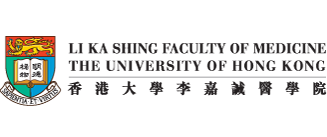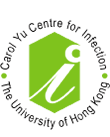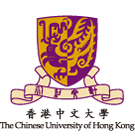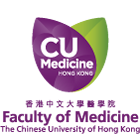Home > Chapters
Chapters
Part VIII: Other issues
8.3 Tuberculosis (TB)
- TB usually involves the lung but can practically affect any other body organs. It transmits mainly through the infectious airborne droplet nuclei generated during coughing, singing, speaking or sneezing by a patient with pulmonary TB, especially in the presence of open lung cavities or positive sputum smears (554).
- Active disease develops months or years after infection in only about one in ten of infected individuals. There is a higher risk of developing active disease with recent infection, impaired systemic immunity (notably HIV infection, diabetes mellitus, chronic renal failure, leukaemia, immunosuppressive therapy, alcoholism, malnutrition, ageing) or local defence (notably silicosis, smoking). Early diagnosis of active disease and prompt initiation of effective treatment remains the key strategy to control this airborne infection at source.
- Up to one-third of the local (and global) population has been infected with TB. To maximise cost-effectiveness and optimise benefit vs risk, screening and treatment of latent TB infection (asymptomatic and non-infectious) are normally targeted at high risk groups (555). Tuberculin skin test and interferon-gamma release assays (IGRAs) are tests for TB infection only, and they CANNOT either rule in or rule out active TB disease.
- The typical site-specific symptoms, e.g. chronic cough +/– blood-streaked sputum for lung parenchymal involvement, and systemic symptoms, like chronic, often low-grade fever, night sweating, weight loss, are rather non-specific and may be absent altogether. Atypical presentations can also occur, e.g. acute onset of pneumonia or meningitis. TB may thus mimic or be mimicked by many other diseases. As TB is still a common disease in HK, it is useful to keep this differential diagnosis in mind, especially for chronic septic or lung conditions where an alternative cause has not been established.
- Chest x-ray has reasonably good sensitivity for pulmonary TB and interval changes are useful to assess activity or response to alternative treatment. However, bacteriological work-up (AFB smear, culture & drug susceptibility tests and/or rapid molecular tests) is essential for confirming the diagnosis and detection of drug resistance. Rapid identification of positive mycobacterial isolates is required to differentiate Mycobacterium tuberculosis complex from non-tuberculous mycobacteria (NTM), infection or colonisation by which is increasingly seen nowadays, especially in patients with underlying lung diseases and/or compromised general immunity. Empirical trial of TB drugs may be considered if TB remains a likely possibility after exhaustive diagnostic workup for possible differential diagnoses.
- TB disease requires combination drug therapy. The standard short-course TB treatment regimen consists of isoniazid and rifampicin given for six months, supplemented in the first two months with pyrazinamide and either ethambutol or streptomycin (556). Directly observed therapy is currently recommended to promote drug adherence, which is absolutely essential for ensuring treatment success and preventing progressive acquisition of drug resistance.
- The standard TB regimen is given with the assumption that the patient does not have multidrug-resistant TB (MDR-TB), which is defined by bacillary resistance to both isoniazid and rifampicin. Although the prevalence of MDR-TB in HK is low (around 1%), clinical vigilance is still required, especially for patients with history of residence/ prolonged stay in areas with high prevalence of TB drug resistance, previous history of treatment and/or poor response to treatment. As MDR-TB is increasingly seen among new TB patients without any known risk factors across a wide age spectrum, caution is also required in high risk institutional environments, where secondary transmission to vulnerable contacts is a key concern. Rapid molecular tests often help to establish a timely diagnosis and inform the initial choice of drugs under such situations.
- Fluoroquinolones are essential in the treatment of MDR-TB. They should not be used as a convenient substitute for ethambutol or streptomycin, as fluoroquinolone resistance may easily develop in case of unrecognised MDR-TB. The use of a fourth drug, ethambutol or streptomycin, in the standard TB regimen may not be necessary if resistance to isoniazid can be excluded. When it is considered necessary to use a fluoroquinolone to replace ethambutol/ streptomycin as the fourth drug, it would be worthwhile to screen for MDR-TB/rifampicin resistance by suitable rapid tests.
- MDR-TB is much more difficult to treat, especially for extensively drug-resistant TB (XDR-TB) with additional bacillary resistance to fluoroquinolone and at least one of the second-line injectable drugs. It is best managed in centres with relevant experience and adequate laboratory support for both phenotypic and genotypic drug susceptibility testing. The newer-generation fluoroquinolones (levofloxacin or moxifloxacin) and second-line injectable drugs (if susceptible) are core drugs, which must be used together with an adequate number of other likely effective first-line or second-line accompanying drugs to prevent further acquisition of drug resistance. High dose isoniazid may be considered in case of low-level isoniazid resistance. Linezolid, in suitable dosage and dosing frequency to minimise toxicity, often plays an important role in the treatment of fluoroquinolone-resistant MDR-TB and XDR-TB. Novel drugs, such as delamanid and bedaquiline, may also need to be considered when drug choices are strictly limited.















